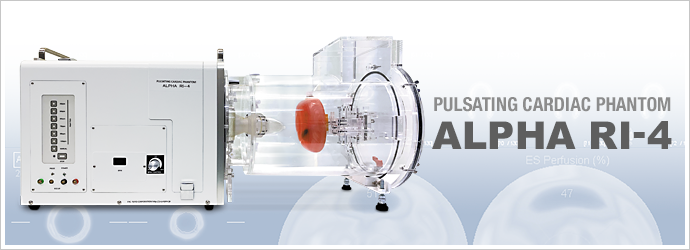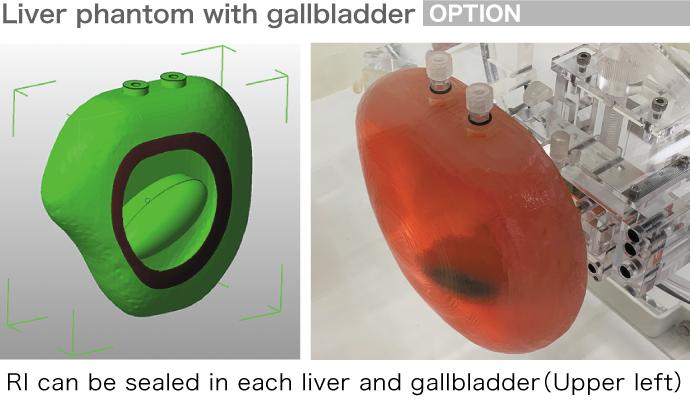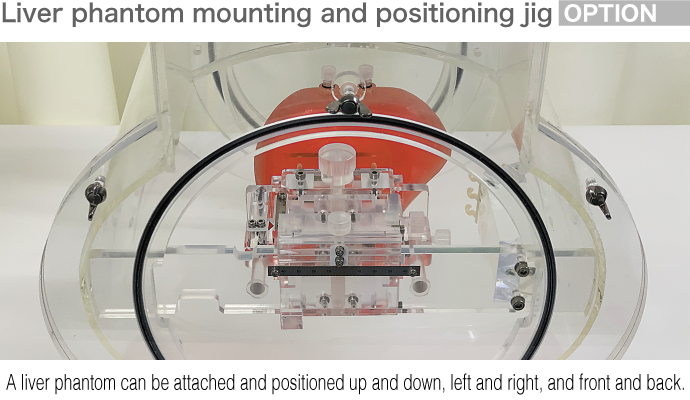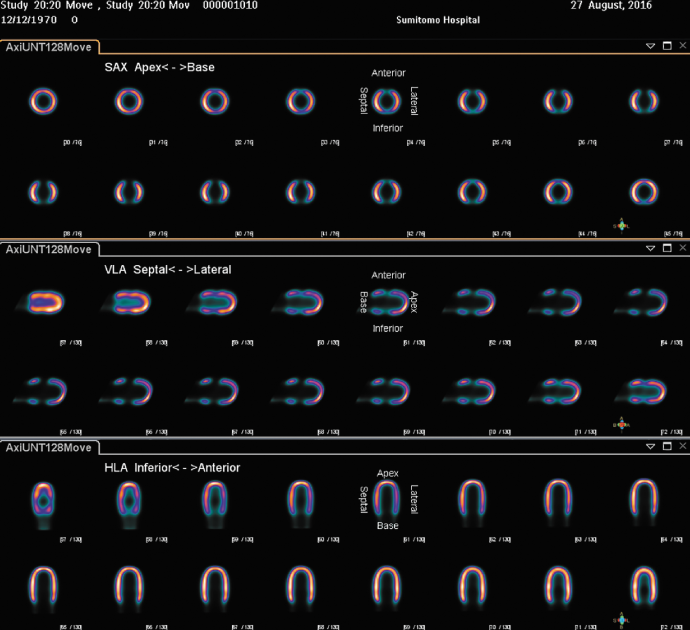
This is a device that simulates cardiac movements by simultaneously activating piston in a cylinder by a motor and cams to let contrast agent or radioactive substance into and out of a special rubber bag.
Significantly lighter than conventional RI-3. Ventricular volume change can also be set more precisely.
Significantly lighter than conventional RI-3. Ventricular volume change can also be set more precisely.
Major features

- Simulates movements of cardiac muscles and ventricles by a special rubber bag with a two-layer structure.
- Simulations of SPECT and CT devices are possible using a formulation that is packed separately in the ventricle and myocardium.
- EF can be changed by adjusting the cylinder stroke (stroke range: 0-80mm). Position detection with accuracy of ± 0.02mm.
- Can select by one touch any of pulsation patterns that include 6 types of clinical data.
- Can manually change HR(heart rate).(Range:5-164 bpm)
- Compact structure that consolidates a control part, driving part and phantom.
- Lead shield is fitted between a phantom and a control part to reduce effects of scattered X-ray.
- Heart part tilted some 30 degrees against body axis.
- Possible to attach missing heart muscle.
- By minimizing the volume of the myocardium, the amount of myocardial medicinal solution used was reduced to less than 1/3 of the conventional one.
- There are 4 types of ventricle and myocardium, including standard sizes and options. Custom sizes are also possible.

 Minimal optimization of myocardial volume
Minimal optimization of myocardial volume Precision display of cylinder stroke
Precision display of cylinder stroke
 Minimal optimization of myocardial volume
Minimal optimization of myocardial volume Precision display of cylinder stroke
Precision display of cylinder stroke

Simulated operation of RI-4
The piston reciprocates as the motor rotates.
Ventricular volume changes in proportion to piston stroke.
As the volume of the ventricle changes, the shape of the myocardium changes.
By controlling the rotation speed of the motor, the heart rate and ventricular volume change patterns are controlled.
Ventricular volume changes in proportion to piston stroke.
As the volume of the ventricle changes, the shape of the myocardium changes.
By controlling the rotation speed of the motor, the heart rate and ventricular volume change patterns are controlled.




SPECT image

QGS processed image

| Item | ALPHA RI-4 | |
|---|---|---|
| Power-supply voltage | AC100V | |
| Motor capacity | 60W | |
| ECG interface | R wave equivalent pulse / Output voltage:DC 0~50mV / pulse width:100msec | |
| control method | PLC control / DC brushless motor drive | |
| Heart rate pattern | 6 types of clinical patterns | 40BPM、50BPM、60BPM、70BPM、80BPM、100BPM |
| manual | 5BPM – 164BPM | |
| Cylinder diameter | 40 mm | |
| Piston stroke | 80 mm | |
| Standard heart model | ESV | 40 ml |
| Ventricular total length | 75 mm | |
| Ventricular base diameter | 31.9 mm | |
*This phanton has been developed jointly with Onoguchi Research Office of Kanazawa University, Radiology Dept. of Sumitomo Hospital and Fuyo Corporation.





